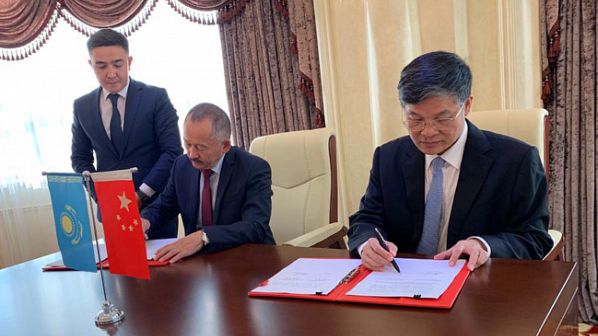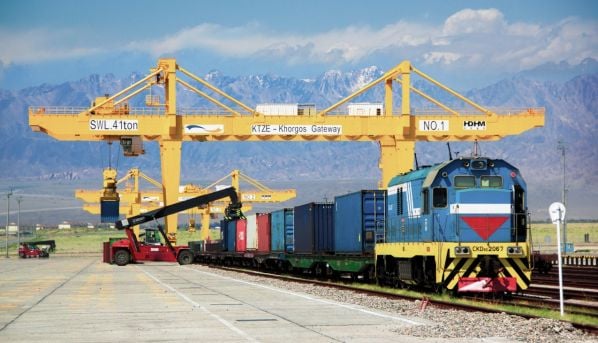Since the start of 2019, KTZ says there was a 25% increase in the number of container trains using the corridor compared with the same period in 2018 with a total of 2013 trains travelling in both directions. The number of trains moving between Kazakhstan and Europe rose by 14% to 1147 trains, while there was a 43% increase in eastbound traffic to 866 trains.
In addition, between January and July this year KTZ says there was a 36% increase in the number of container trains travelling between Kazakhstan and China as well as moving from China via Kazakhstan to other Asian countries.
Meeting
During a meeting this week between KTZ and China Railways Corporation (CRC) at Alashankou station in the Alataw Pass in China on the border with Kazakhstan, measures were agreed to reduce the time spent by freight trains at border stations, for example by accelerating customs clearance procedures and improving technical interfaces between the railways and customs authorities.
Measures were also agreed to be able to cope with an extra 1 million tonnes of freight expected to move between the two countries in 2020. This year, the target was 15 million tonnes, with 10 million tonnes moving west and 6 million tonnes travelling east.

The two delegations were headed by Mr Kanat Almagambetov, KTZ’s first deputy chairman, and Mr Li Wensin, deputy director general of CRC (above).
“This meeting was aimed at removing all obstacles for trains passing through Kazakhstan between Asia and Europe,” Almagambetov said.

